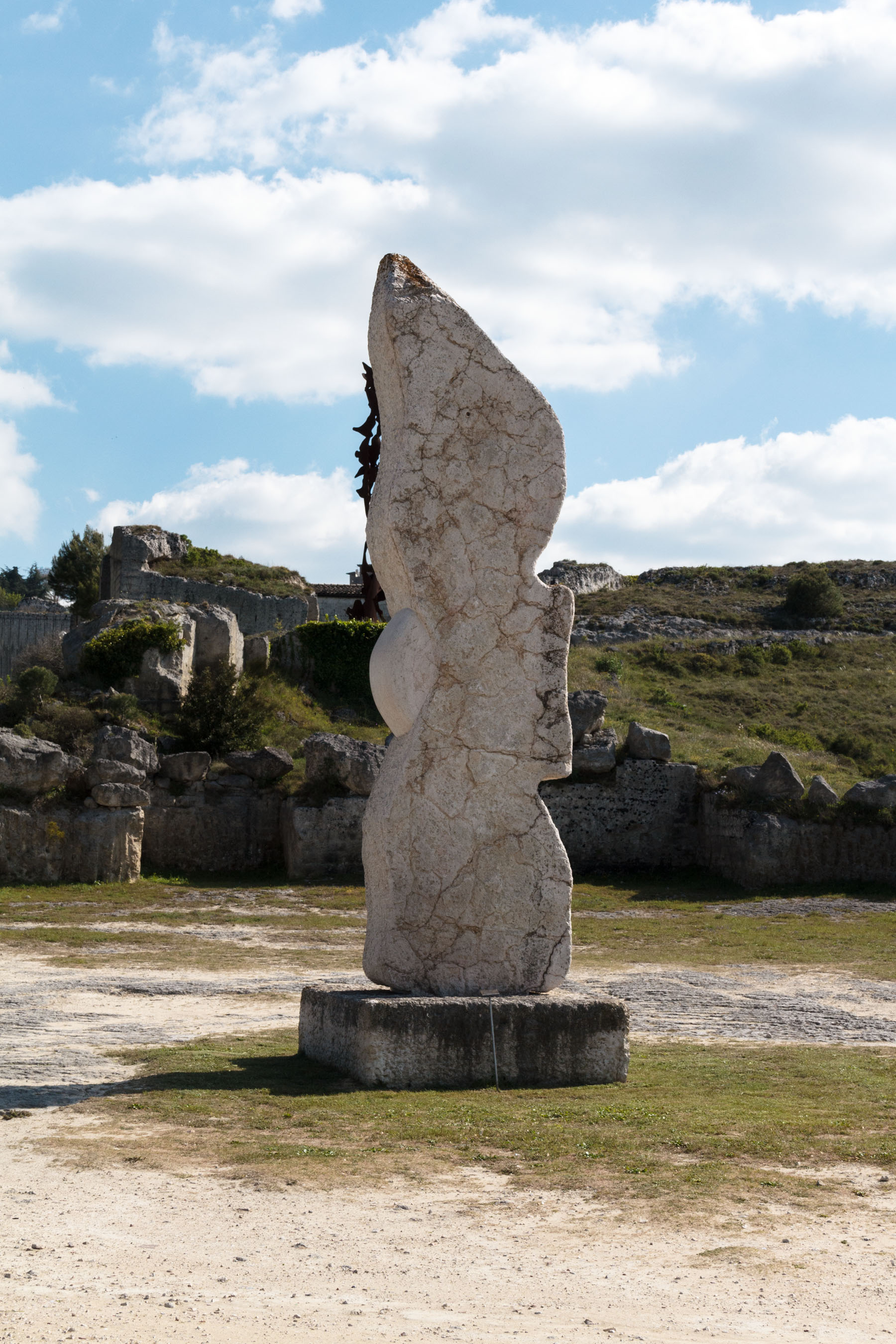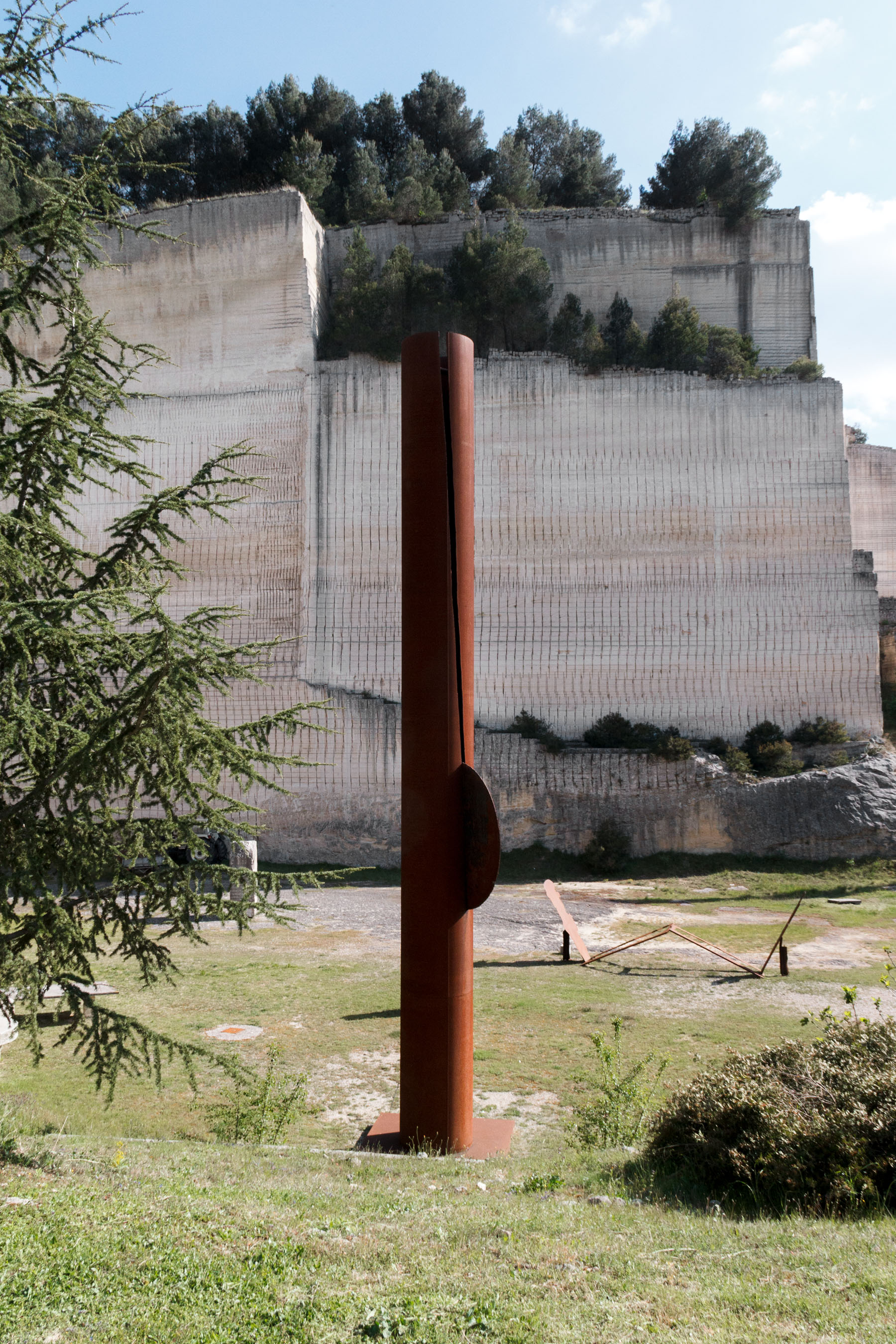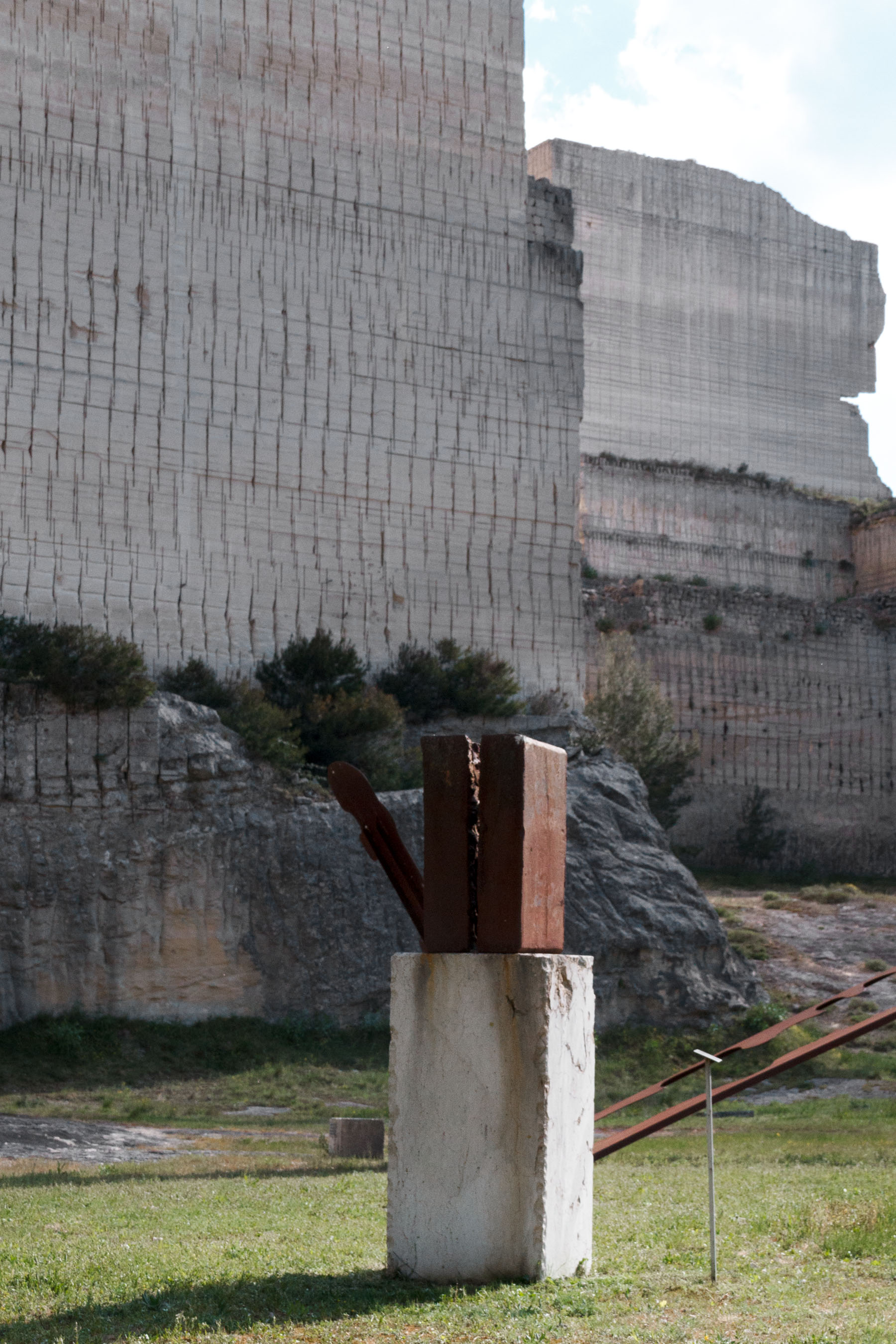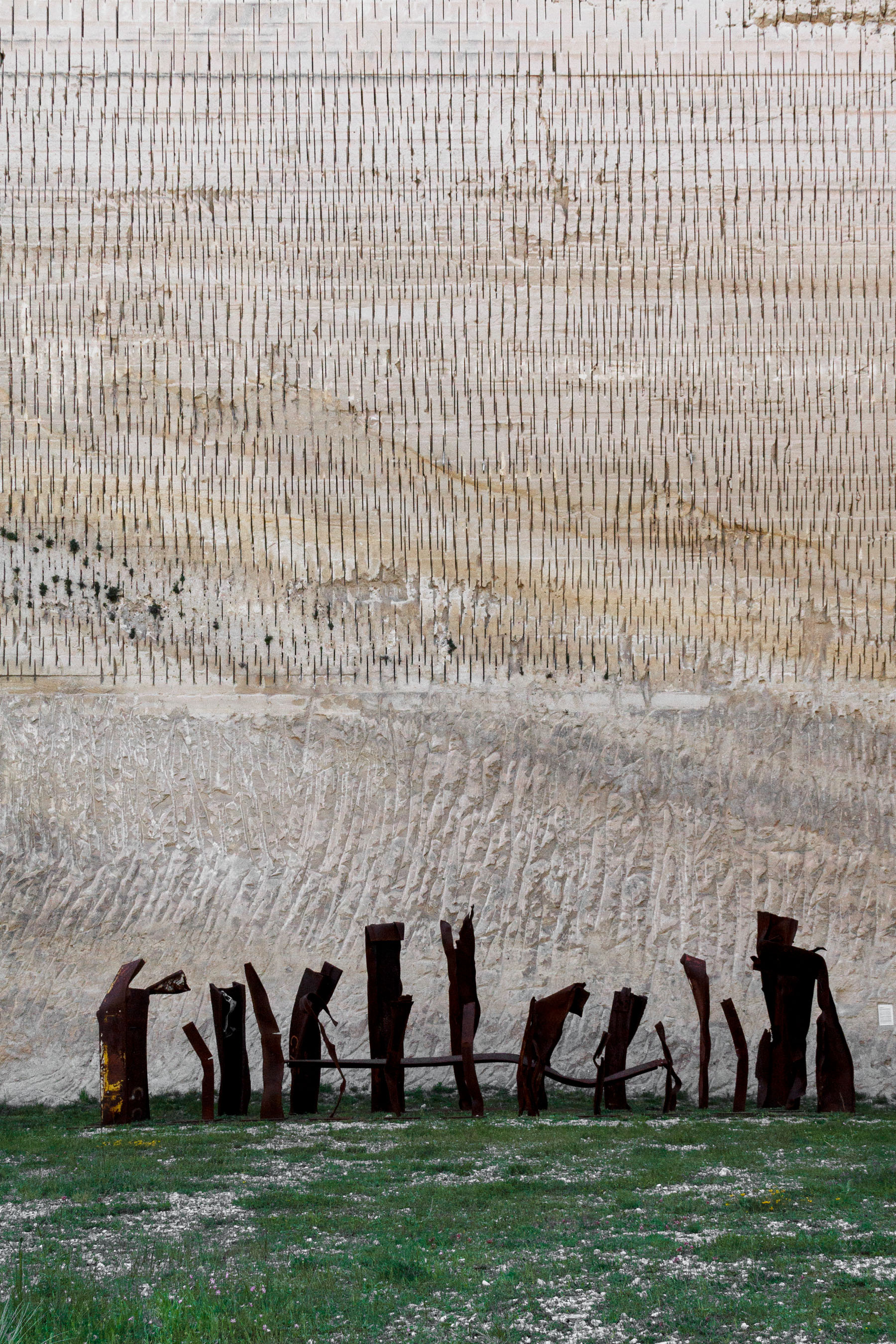"La Palomba" Sculpture Park in Matera, Italy
Off the SS7 highway in the Basilicata region in the South of Italy, abstract sculptures occupy a site on the ancient archeological grounds in Matera. Known as "La Palomba" Sculpture Park, the public garden sprawls over six hectares of an obsolete tufa stone quarry typical of the geological landscape in the area. At the origins of the sculptural park is the Apulian contemporary sculptor Antonio Paradiso (b. 1936). A student of Marino Marini's, many of Paradiso's sculpture-installations are on display in the outdoor gallery which visitors can access year-round, alongside occasional exhibits of international artists.
The locality is named after the nearby sanctuary "Santa Maria della Palomba," a 16th century construct built where an ancient rock-hewn church is understood to have stood. Indeed, Matera is known for its historic natural archeological park of rupestrian dwellings and churches, carved into the soft volcanic hills for millennia up throughout the Middle Ages. "La Palomba" refers to the dove in the church portal, emblematic of the Holy Spirit. This addition was likely a later, Christian addition to the pre-existing symbolic infrastructure.
"La Palomba" Sculptural Park is part of a palimpsest of civilization in which archeology and religion play the protagonists. In the memoir Christ stopped at Eboli, Carlo Levi recounts his exile in Basilicata during Fascist-era Italy. The saying after which the book is named, "Cristo si è fermato a Eboli," refers to the small town of Eboli in a neighbouring region, where the road and railway connecting the country curve away. Basilicata, it is understood, is a Dante's Inferno of sorts, where the "straightforward path" has been lost. The region is arid, desolate and forgotten by God, alien to the modern and rational networks of communication that organize the landscape elsewhere. For this, it has even bred another type of culture, one of mysticism and paganism, over which Christianity was superimposed but never entirely absorbed. The city of Matera with its sassi, rock-dwellings and obsolete stone quarries being reused into sites of culture, such as the Parco Scultura, are reflective of this ancient culture.
Photos by Francis Rudman, threefold agency














